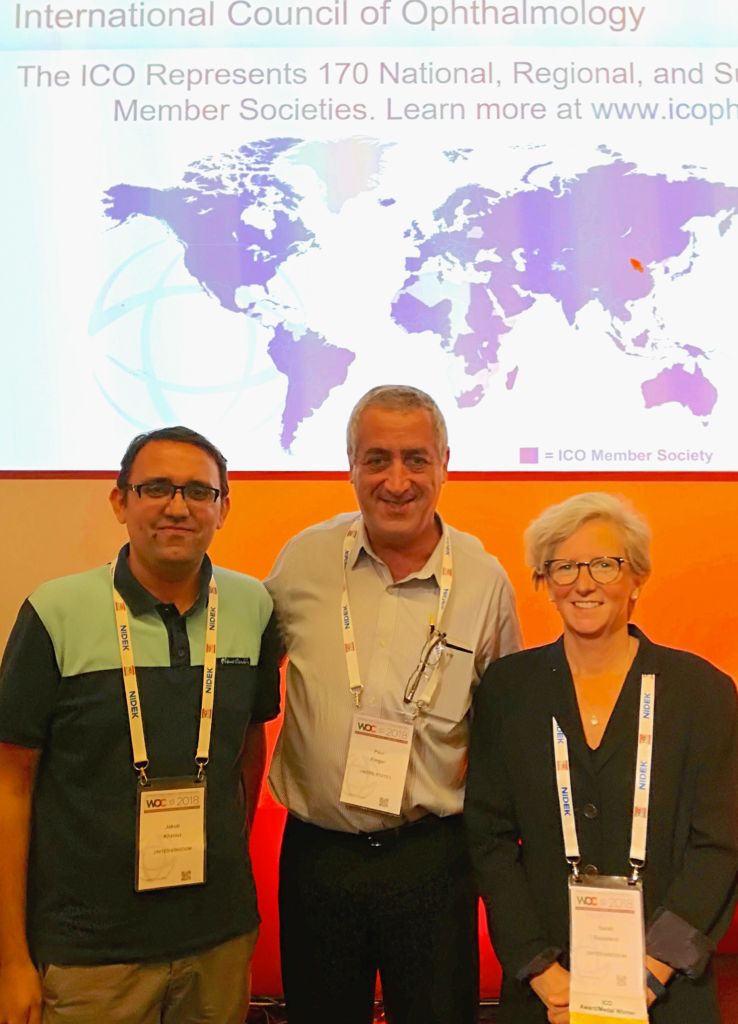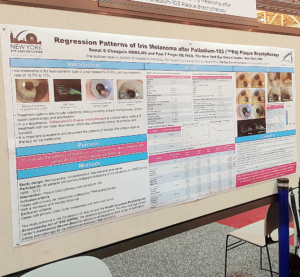
Retinoblastoma (RB) is the most common eye cancer in children, affecting approximately 8,000 of them each year. In developed countries like the United States, the survival rate reaches beyond an astounding 96%, with early diagnosis and treatment being key to saving a patient’s life and sight. However, this incidence rate is higher in developing countries, where most of the children succumb to metastatic retinoblastoma. In areas where children and families have no means of travel to treatment centers far away from them, these afflicted children often endure their disease untreated until there is very little hope for them left. Because no child or family should have to suffer these losses, especially due to the simple inability to reach proper care, The Eye Cancer Foundation has launched the 2020 Campaign, a campaign dedicated to training ophthalmic oncologists to serve in underprivileged countries.
One such underprivileged area is India, a country populated by over 1.32 billion people and counting, where 1,500 of the global 8,000 retinoblastoma cases are diagnosed every year. However, the reality persists that many cases of retinoblastoma go undetected or unreported in India, and awareness for the disease is abysmally low in rural areas. Motivated by India’s need to increase awareness and treatment for this disease, The Eye Cancer Foundation has sponsored fellowships for three doctors from India to train with Dr. Paul T. Finger at The New York Eye Cancer Center over the last year alone — Dr. Sonal S. Chaugule, Dr. Abhilasha Maheshwari, and Dr. Puneet Jain.

After the successful completion of her NYECC-ECF fellowship in Summer 2017, Dr. Chaugule returned to her native Maharashtra, India. She currently employs her expertise in retinoblastoma care by consulting at HV Desai Eye Hospital, a critical center for eye cancer patients in Pune, India. Her continued efforts to raise awareness in this vastly unrecognized disease have led to her medical advice being featured across Indian news media. According to Dr. Chaugule in The Indian Express, “Awareness about retinoblastoma is low and early detection is crucial to give the best chance of saving the child’s life, eye, and vision. Early detection and proper treatment will ensure 95% of the children diagnosed with RB are saved from death, 90% have their eye intact and 85% have their vision protected.
Unfortunately, in India, a child is taken to an eye specialist only when there is any notable problem, which makes treatment of RB at a later stage much harder,” she said.
Dr. Chaugule suggests that systemized screening of the eye for any abnormality in infants and toddlers should be made mandatory. Additionally, it is crucial that all doctors and healthcare professionals, whether they be eye cancer specialists or not, ought to be deeply sensitized to this disease’s magnitude.
In response to India’s growing need for retinoblastoma care, The Iksha Foundation, a non-governmental organization based in Benglauru, has accelerated their programs to raise awareness for the disease so that children may be diagnosed early enough to save their livees. Founder and trustee at the Iksha Foundation, Thanmaya Bekkalale, says, “We only know the reported cases of retinoblastoma — there are numerous cases that go unreported. The need of the hour is to spread individual and societal awareness about retinoblastoma and promote early detection as it is documented that every day, four children are born with eye cancer in India, and one of them is facing death as a result of diagnosis at an advanced stage, or not diagnosed at all.”
To raise awareness, May 13th through 19th were observed as World Retinoblastoma Awareness Week. The Iksha Foundation will hold awareness programs, ensuring that their various stakeholders will understand that early diagnosis is crucial to saving the lives of children throughout India.
Read the article published in The Indian Express by Dr. Chaugule and her colleagues at HV Desai Eye Hospital here.
To stay up-to-date on the latest news in eye cancer, please keep our website, eyecancer.com, in your bookmarks.


 Prior to involvement of The Eye Cancer Foundation (ECF), Jordan had no practicing eye cancer specialists. We trained Dr. Yacoub Yousef and he established the first eye cancer referral center at The King Hussein Cancer Center in Amman. After years of building this center, Dr. Yousef has trained many eye cancer specialists for the surrounding countries and has offered life and vision-sparing treatments for patients throughout the Middle East. Finally, with a place to go, patients requiring eye treatment inundated these hospitals. With more and more patients needing eye cancer services, Jordan and the Middle East needed a specialist in eye pathology.
Prior to involvement of The Eye Cancer Foundation (ECF), Jordan had no practicing eye cancer specialists. We trained Dr. Yacoub Yousef and he established the first eye cancer referral center at The King Hussein Cancer Center in Amman. After years of building this center, Dr. Yousef has trained many eye cancer specialists for the surrounding countries and has offered life and vision-sparing treatments for patients throughout the Middle East. Finally, with a place to go, patients requiring eye treatment inundated these hospitals. With more and more patients needing eye cancer services, Jordan and the Middle East needed a specialist in eye pathology. 
 For nearly 20 years, the Union for International Cancer Control has brought the world together in a unified front against cancer. World Cancer Day aims to “unite the cancer community to reduce the global cancer burden, promote greater equity, and integrate cancer control into the world health and development agenda” (
For nearly 20 years, the Union for International Cancer Control has brought the world together in a unified front against cancer. World Cancer Day aims to “unite the cancer community to reduce the global cancer burden, promote greater equity, and integrate cancer control into the world health and development agenda” (
















